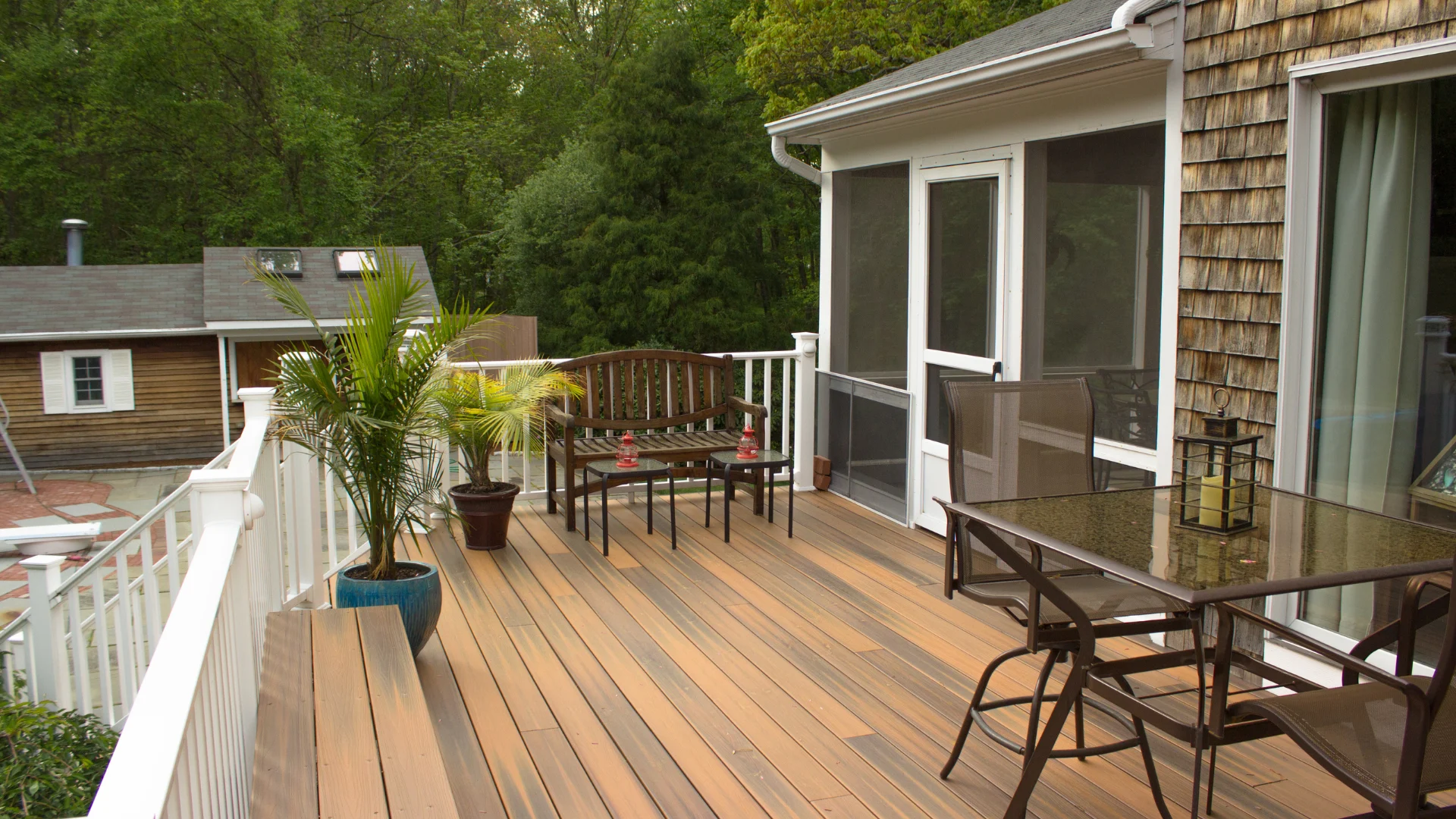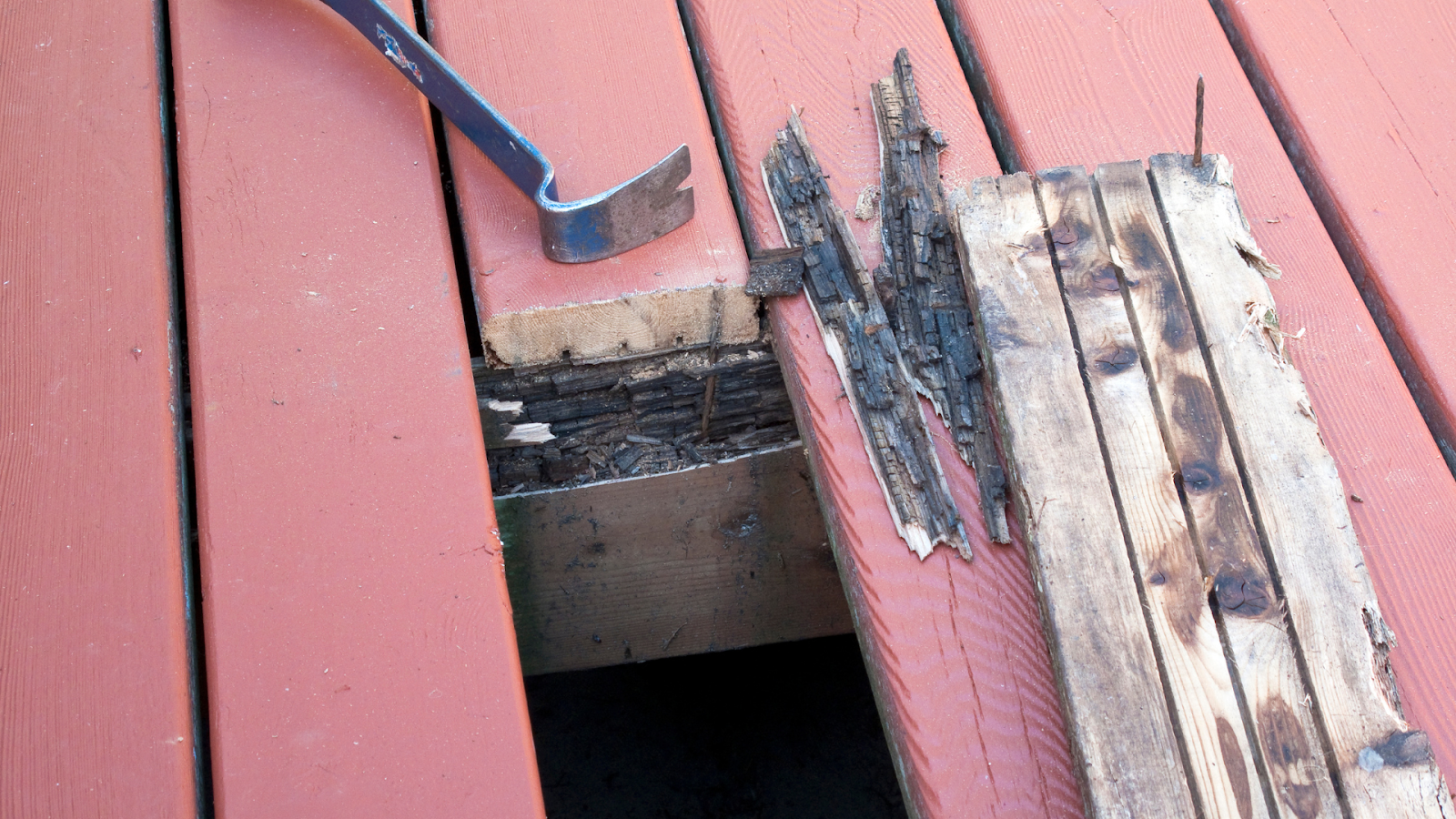A beautiful deck can be the centerpiece of your backyard—a place for family gatherings, summer barbecues, or quiet evenings under the stars. But like any outdoor structure, your deck is exposed to the elements year-round. Without proper care, it can quickly fade, crack, or deteriorate. The good news is that with regular upkeep and a few innovative strategies, you can keep your deck looking new for years.
In this blog, we’ll discuss essential deck maintenance tips to protect your investment and ensure your outdoor space stays attractive, safe, and functional.
Start with a Thorough Inspection
The first step in effective deck maintenance is a detailed inspection at least once a year. Check for:
- Loose or protruding nails and screws
- Rotting or splintered wood
- Rusty or weakened fasteners
- Cracks or warping in boards
- Signs of mold, mildew, or insect damage
Inspect the deck’s surface and underneath, especially the support posts and joists. Addressing minor issues early can prevent costly repairs later.
Clean Your Deck Regularly
One of the most overlooked deck maintenance tips is routine cleaning. Dirt, pollen, leaves, and moisture can lead to mildew and wood decay.
Here’s how to clean your deck effectively:
- Sweep the deck weekly to remove debris and prevent buildup.
- Wash the surface with mild soap and water, or use a commercial deck cleaner. A soft-bristle brush or broom works well for scrubbing.
- Rinse thoroughly with a garden hose or low-pressure setting on a pressure washer.
Avoid high-pressure washing unless you’re experienced. If done incorrectly, it can damage wood fibers or cause splintering.
Seal and Stain for Long-Term Protection
Wood decks, in particular, benefit from sealing and staining to protect against moisture, UV rays, and foot traffic.
How often should you seal your deck?
Typically every 2–3 years, but this can vary based on your deck’s exposure to sun and rain.
Tips for sealing and staining:
- Choose a quality stain or sealant designed for exterior use. Semi-transparent stains offer UV protection while allowing wood grain to show.
- Ensure the deck is completely dry before applying.
- Apply in moderate temperatures, avoiding hot or humid days for best absorption.
- Use a brush, roller, or sprayer for even coverage.
Sealing your deck enhances its color and finish and acts as a barrier against water penetration and sun damage.
Prevent Water Damage
Water is your deck’s worst enemy. It can lead to rot, warping, and mold in Suffolk County’s variable climate.
Here’s how to protect your deck from moisture:
- Keep gutters and downspouts clear and directed away from the deck.
- Make sure there’s proper drainage under the deck to avoid pooling.
- If your deck is attached to your home, inspect and maintain the flashing where the deck meets the house to prevent water infiltration.
- Store planters on risers or trays to prevent trapped moisture beneath pots.
Taking steps to control water exposure is one of the most essential deck maintenance tips for extending its lifespan.
Protect Against Insects and Pests
Termites, carpenter ants, and other insects can cause severe structural damage to wooden decks. Use pressure-treated wood or composite decking to resist pests. You should also:
- Keep shrubs and vegetation trimmed back from the deck.
- Inspect for soft spots or tunneling in the wood.
- Consider treating your deck with a pest-repellent wood preservative.
Regular inspections and prompt treatment will minimize the risk of infestation.
Address Snow and Ice in Winter
Suffolk County winters can be harsh on outdoor surfaces. Snow and ice left to accumulate can cause warping, cracking, and mold.
Winter deck maintenance tips include:
- Shovel snow using a plastic shovel (not metal) to avoid scratching the surface.
- Shovel with the grain of the wood.
- Use a calcium chloride-based ice melt instead of salt, which can damage both wood and metal fasteners.
Taking these precautions in winter helps preserve the integrity of your deck throughout the year.
Check and Replace Hardware
Deck fasteners—screws, bolts, and brackets—can corrode or loosen over time. Periodically check all visible hardware and replace any that are:
- Rusted
- Loose
- Missing
Tightening connections and replacing compromised components ensures your deck stays structurally sound and safe.
Don’t Forget Composite Decking
While composite decks require less maintenance than wood, they still need care. Follow these deck maintenance tips for composites:
- Clean twice a year with soap and water or a composite-specific cleaner.
- Rinse thoroughly to prevent residue buildup.
- Avoid abrasive brushes or harsh chemicals that can damage the finish.
- Check for mildew in shaded areas and clean accordingly.
Even the most durable materials benefit from routine attention.
Keep Your Deck Looking Its Best with Doug’s Painting and Contracting
Your deck is more than just an outdoor structure—it’s a gathering place, a retreat, and an extension of your home. Following these deck maintenance tips ensures it remains safe, beautiful, and ready for every season.
Regular inspections, cleaning, sealing, and a little attention to detail extend the life and look of your deck. Whether you have a classic wood deck or a modern composite one, these best practices will help maintain its integrity and appearance for years.
At Doug’s Painting and Contracting, we specialize in deck care and restoration for homes throughout Suffolk County. Whether your deck needs a deep clean, new stain, or a complete repair, our team can help you bring it back to life. Let us remove the hassle from maintenance and ensure your outdoor space is safe, sturdy, and stunning.





